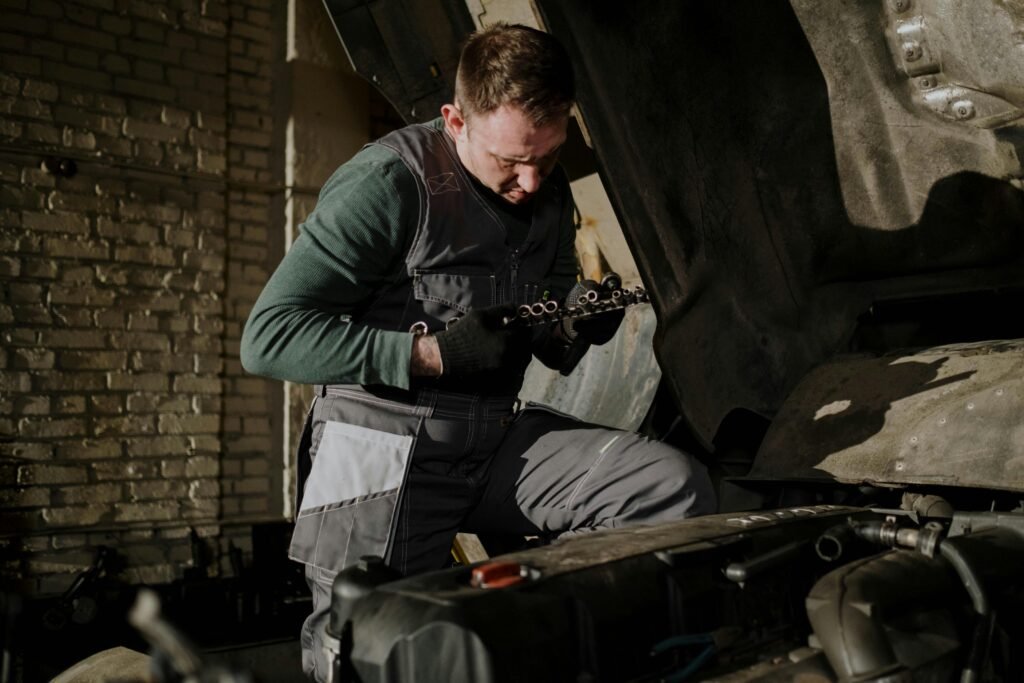If you have ever had to replace a component on your truck, you are probably asking: Do you stick with OEM parts, or do you opt for aftermarket alternatives? It’s not always a matter of what fits—it’s about what is best for your budget, for the needs of your truck, and for your peace of mind.
This option should be made sooner or later by all truck owners, local delivery operators, and long-haul drivers. By having an idea of the advantages and disadvantages of each choice, you can save a big deal of time, money, and headache. We will simply break it and help you determine what is best for you.
So, What Exactly Are OEM Parts?
OEM is short for Original Equipment Manufacturer. That is, they’re manufactured by the same firm—or a certified partner—who made your truck. Think of them as identical replacements. If your Kenworth or Mack truck came with a specific brand of fuel pump, an OEM part is one of the same brand and model.
They’re built to match factory specifications, and the main appeal is predictability. You know it’s going to fit, and you know it’s going to work the same way the original did.
Perks of Using OEM Parts:
- Consistent Fit: OEM parts are a perfect match to the original. No alterations, no surprises.
- Trusted Quality: Materials, designs, and tests are all conducted to the manufacturer’s standards.
- Included Warranty: Most OEM parts come with a direct warranty from the manufacturer of the truck.
- Easy to Choose: There’s no guesswork—you just ask for the factory part number.
Why Some Folks Avoid Them:
- Hefty Price Tag: OEM components usually cost more. In some cases, a lot more.
- Harder to Find: You often have to go through a dealership or an authorized supplier.
- No Performance Tweaks: These parts are often identical to the originals—no upgrades are included.
Understanding Aftermarket Parts
On the other hand, aftermarket parts are manufactured by third-party companies that are not directly affiliated with your truck’s brand. Some of them produce simple, budget-friendly substitutes. Others drive innovation, providing upgraded components that surpass their originals in longevity or design.
The aftermarket scene is broad. There’s a wide range in terms of quality and pricing—some are great, while others are not so great.
Why Drivers Like Aftermarket:
- Affordability: The biggest advantage is price. You can often save 30% to 50%.
- Availability: Walk into any parts store or shop online—you’ll likely find what you need right away.
- More Options: You’ll see multiple brands for the same part, often with different features or materials.
- Innovation Potential: Some aftermarket parts are built stronger or perform better than OEM options.
If you’re keeping a close eye on expenses, another practical option is to get affordable used truck parts for heavy-duty vehicles. They offer functionality at a fraction of the price, especially for non-critical components.
But Beware of the Drawbacks:
- Inconsistent Quality: The quality varies significantly depending on the brand. Some are excellent; others are cut-rate.
- Possible Fitment Issues: Occasionally, a part may not fully align and require minor adjustments.
- Weaker Warranties: Warranty coverage varies, and it is often less comprehensive than the OEM guarantee.
When It Makes Sense to Go OEM
There are some instances where it is the better decision to pay extra for OEM:
- You’re Under Warranty: Using anything other than OEM can void your manufacturer’s warranty.
- You’re Replacing a Safety-Critical Part: For brakes, steering, or airbag systems, OEM ensures compatibility and performance.
- You’re Planning to Sell: Buyers often prefer trucks with factory-slip parts; it just looks more legitimate.
- You Don’t Want the Hassle: OEM parts save you the time and research involved in comparing aftermarket options.
When Aftermarket Wins the Race
All the same, aftermarket can be the best fit in many practical situations:
- You’re on a Shoestring Budget: Aftermarket stretches your dollar, particularly on used or high-mileage trucks.
- You Desire a Performance Advantage: Certain parts are upgraded to perform under more difficult conditions or for better fuel economy.
- You Require Something Quickly: Local retailers and online retailers generally carry aftermarket products and have quicker lead times.
- You’re Comfortable Researching: If you know how to read reviews and spot good brands, you’ll find excellent aftermarket parts that match—or beat—OEM.
Tips for Picking the Right Aftermarket Brands
Not all aftermarket parts are made equal. This is how to choose ones that won’t let you down:
- Read Real-World Feedback: Trucking forums and YouTube reviewers tend to cut to the chase.
- Ask Mechanics You Trust: Experienced techs usually know which brands are reliable and which brands are not.
- Look for Standards: Parts that pass SAE or ISO certifications are usually of better quality.
- Check the Warranty: A good warranty implies that the manufacturer stands behind its product.
Once you understand what to search for, aftermarket buying is a great deal less complicated—and advisable.
Final Thoughts: Which Path Should You Take?
Here’s the bottom line: there is no one-size-fits-all winner in the OEM vs. aftermarket discussion. Each option has both plus and minus.
If you are repairing an old-model truck, then there is a significant repair, or you simply don’t want to second-guess your decision, OEM parts provide peace of mind. But if you are cutting costs, dialing in performance, or working with a vintage rig, the aftermarket can provide real benefits – as long as you choose wisely.
No matter how you slice it, remember this: It’s not so much about the label on the box and more about the quality behind it. Select parts that are suitable for your needs, budget, and future vision.
Refresh Date: August 21, 2025

